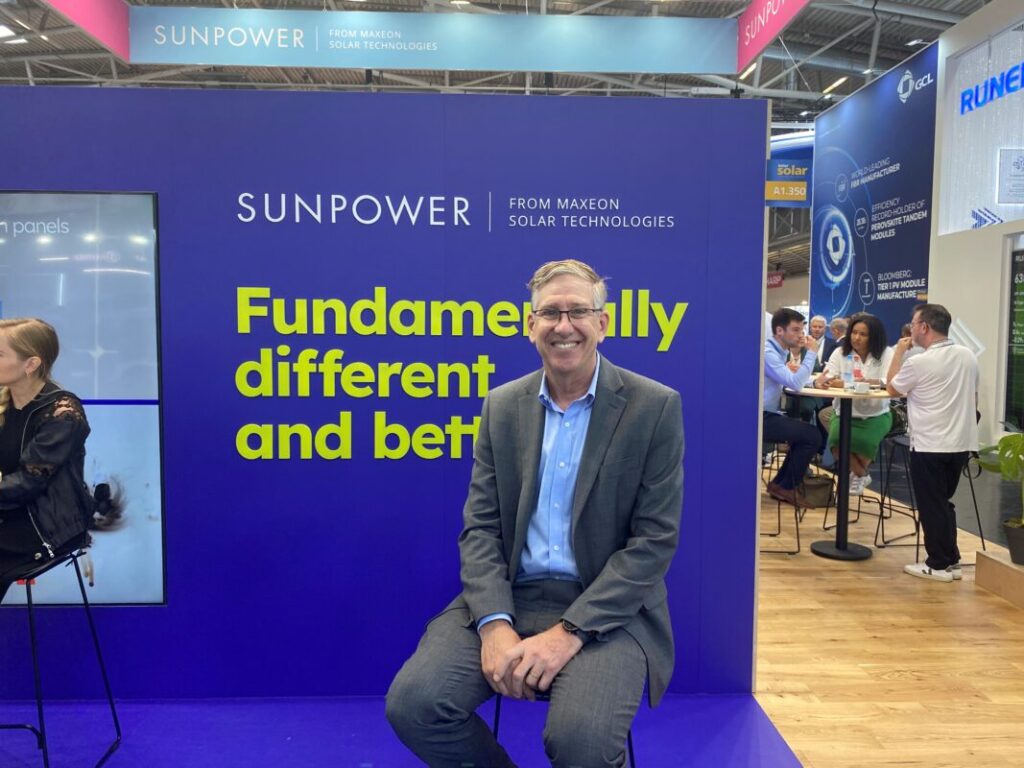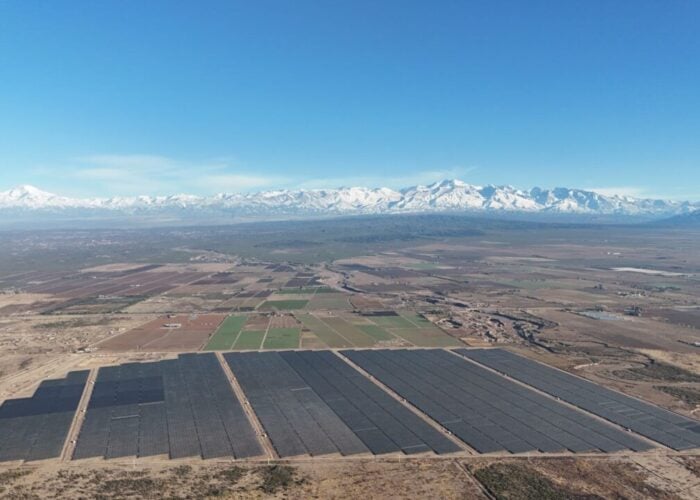
Today at the Intersolar Europe trade show in Munich, PV Tech Premium sat down with Bill Mulligan, CEO of Singapore-headquartered solar manufacturer Maxeon.
2024 has been a turbulent year for the company, which operates manufacturing facilities in Malaysia and Mexico and is pursuing a 3GW facility in the US. In its most recent financial results – which were delayed – Maxeon posted US$14.9 million in losses and announced a lifeline investment from its now-majority shareholder. November last year also saw the company lay off up to 22% of its workforce amid cloudy financial forecasts.
Try Premium for just $1
- Full premium access for the first month at only $1
- Converts to an annual rate after 30 days unless cancelled
- Cancel anytime during the trial period
Premium Benefits
- Expert industry analysis and interviews
- Digital access to PV Tech Power journal
- Exclusive event discounts
Or get the full Premium subscription right away
Or continue reading this article for free
However, Mulligan was optimistic about the company’s future and attributed the difficulties to a convergence of broad market trends and isolated incidents in the company’s operations.
In one of Intersolar’s many, vast hangars populated with the largest solar manufacturers and developers in the world, we spoke about the ongoing impacts of rock-bottom module prices on Maxeon – which trades on high technological quality rather than low price – the difficulties of project financing in the US and the latest antidumping trade measures.
This is the first of a two-part interview. The second part (which can be read here) will discuss Maxeon’s technological offering and its recent patent infringement lawsuits against competitors.
PV Tech Premium: What has been the cause of Maxeon’s difficulties in the last year?
Bill Mulligan: Let’s talk about the US market first. In residential, it’s down quite a bit in the last two years, probably over 30% down since two years ago. It’s driven primarily by higher interest rates: in the US, two-thirds of the systems are either financed through leases or loans, so they’re very sensitive interest rates, particularly in low-cost-of-power states.
So in the low-cost-of-power states, the higher interest rates really hurt [the residential market], particularly states like Texas and Florida. And then, in California, there was a change to the net metering standard; California has such high penetration now that they have this duck curve phenomenon, and they’ve really reduced the value of solar feeding into the grid during the day to try to incentivise storage. So that’s caused a pretty big market dislocation.
Meanwhile, the US power plant market is booming. Regarding the module supply situation, there was a huge shortage for a while, and prices were very high. This year, more Chinese companies found avenues to get into the United States, and also India has come on. And so the price of panels in the utility-scale sector dropped pretty dramatically from, say, the low 30s to the mid-20s cents per watt.
So, Maxeon has had some tough challenges. We were doing very well here in Europe with our DG (distributed generation) business, and then this massive oversupply happened. And so, just like everybody else in the PV industry, we’re suffering deeply with exposure to Europe. The US is okay, but we lost our biggest customer there, which was SunPower – we were pretty much the sole source for SunPower.
Was that because of module price?
BM: It was partly cost and partly how SunPower changed their strategy. They decided to move towards lower-cost commodity panels rather than focus on the absolute premium. So there was a lot of tension there, and we agreed on a settlement to terminate the contract, and we’re going our separate ways. That dislocation hurt the residential sector in the US.
Tell me about Maxeon’s US business, and the decision to focus entirely on the US for utility-scale
We had to do something. Early on, when we started that business up, there were some rough times, but we sorted that all out, and we had some fairly high-price contracts coming into this year and we were starting to make some decent money.
But then a couple of our major customers had project delays on their end, so they wanted to push that out. So when you lose that volume, your factories become under-utilised, and your costs go up. And then, of course, if you’re not shipping the product, you’re not generating the revenue or the profit.
At the same time, the power plant business originally took some fairly large prepayments, two years ago or so. And what we do [over time] is we amortize those prepayments with shipments as we make the shipment. So although we’re making a profit on a P&L standpoint, on a cash flow basis, we’re really only collecting half of the cash in some cases for the sale.
So we had a cash flow drain on the power plant business where some of them pushed out their projects, the DG business in Europe went to hell, we lost SunPower…all of that created a very challenging situation. We had to do something.
Fortunately, we were able to get our largest shareholder, TZE (TCL Zhonghuan Renewable Energy Technology Co. Ltd.) to come in and backstop the company. They’re putting close to US$200 million into the company over the next few months.
As part of that transaction, we will become majority-owned by TZE (51%) which has some potentially negative implications in the US, particularly with the Department of Energy loan, although we believe there still are some paths there to make that happen.
But it has a lot of positives, particularly for our utility-scale customers because TZE’s parent company [Chinese tech manufacturing giant TCL] is viewed by our power plant customers as very bankable and stable. That will hopefully allow us to do some of the things we’ve been wanting to do [in the US]. It’s been a tough six months, but we’re feeling a lot more optimistic now.
How is the plan for a US manufacturing facility going?
It’s been slower than we would’ve liked for a couple of reasons. On our end, we had a site selected, and then the developers sold the site out from under us. So that slowed us down. We had to go select a new site, and we ended up in Albuquerque.
But I would say the biggest hang-up was the drop in panel prices. As you know, we need to contract some offtake agreements to arrange the financing with both DOE and some other private investors. And we were having difficulty signing up for offtake agreements at the prices we needed.
Now that’s changing, and prices are starting to look stronger, we’re hopeful we’ll potentially break ground in the second half of this year.
How much of an impact on prices do you think the latest antidumping petition will have?
Policy is catching up [with market forces]. The new AD/CVD petition on four countries in Southeast Asia has already had an impact on market prices. We’re seeing folks that weren’t willing to talk to us at these higher prices now all of a sudden are coming back.
We feel pretty good about our position because we’re committed to US manufacturing. We do make our solar cells for our US power plant performance line in Malaysia [one of the four countries under investigation by the Department of Commerce and International Trade Commission], but we feel that we’ve got a really strong case: that we’re not the cheapest product out there. We’re not dumping.
There are some scenarios where we could get swept up in that, but we have contingency plans to deal with that. Overall, we’re feeling pretty good about where that’s going to go, and overall, it will help increase market pricing, so that’s a good thing.






